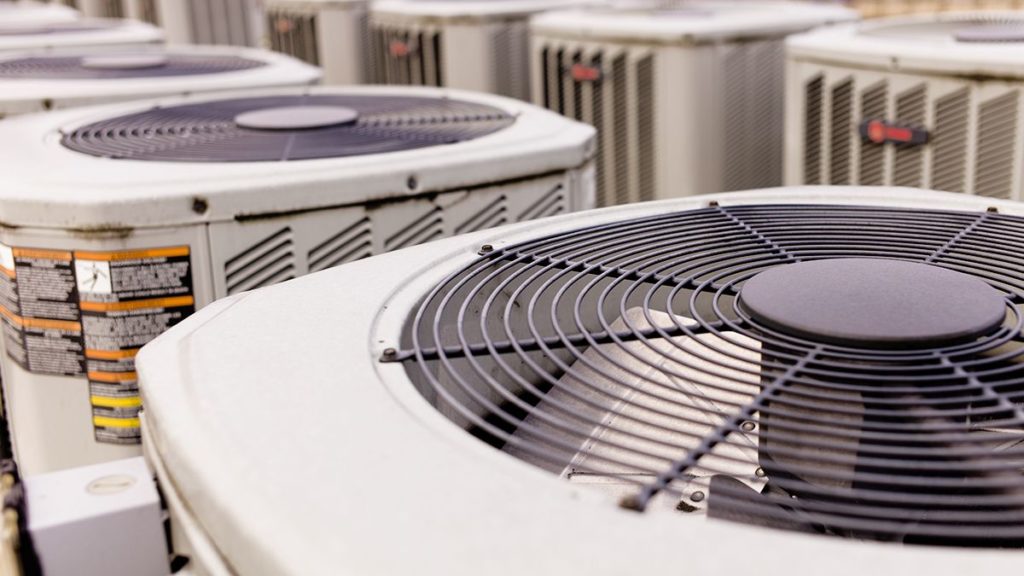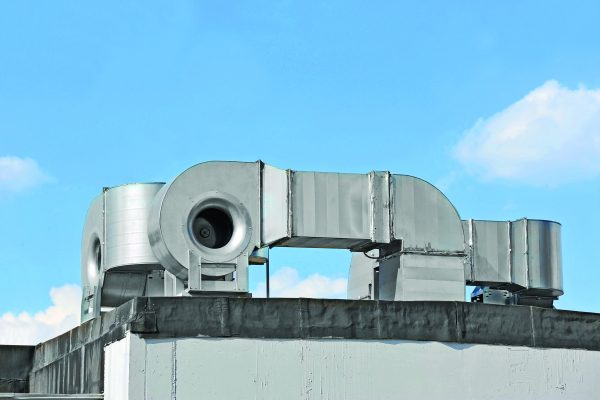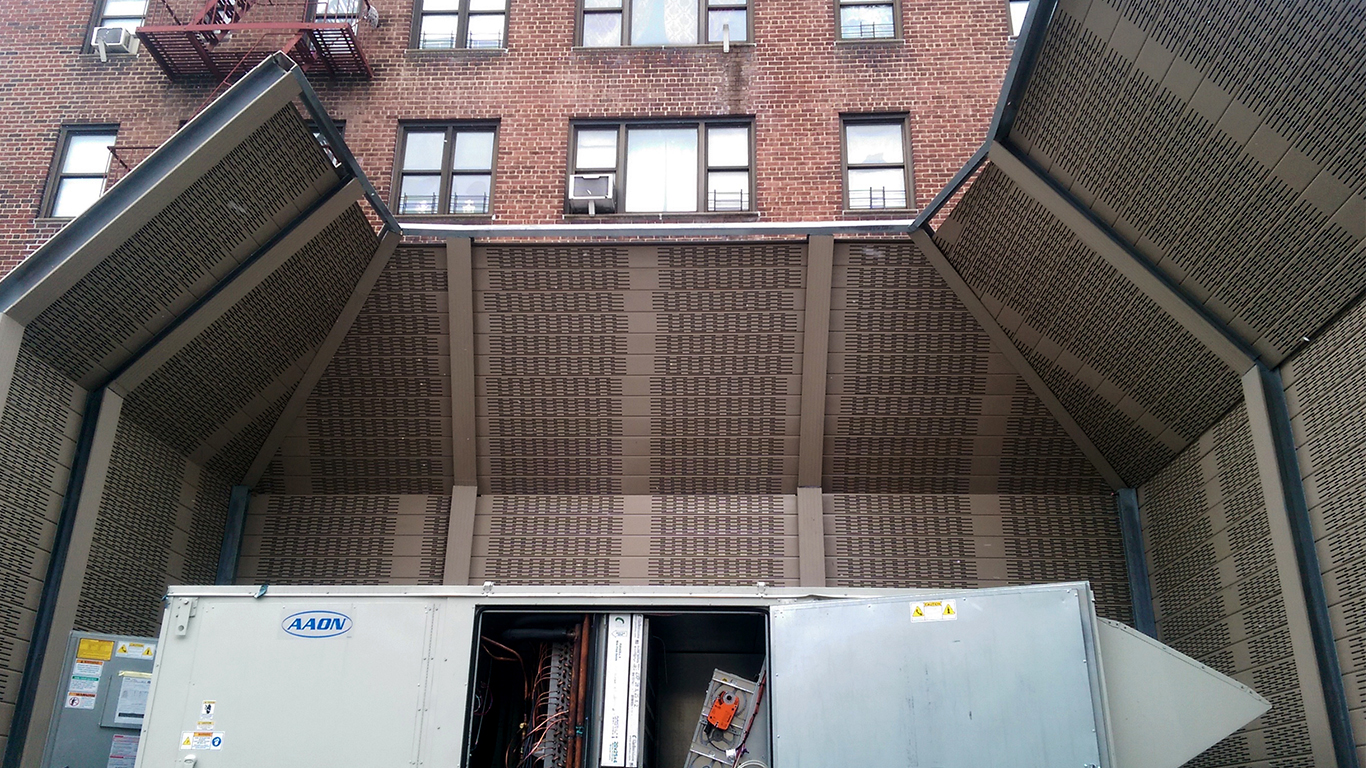This blog was updated on 12/1/19 to reflect new knowledge and understanding of HVAC noise and HVAC sound traps that minimize noise levels at all frequencies and hopefully amplitudes.
Barrier / Sound Absorption Technology
In our professional recording studio and listening rooms, we now know the two types of technology that we need to deal with the energy within our rooms and the energy that is generated from sources outside our rooms. We use barrier technology to reflect energy from outside sources back to the source and we use sound absorptive technologies to manage the sound energy we create within our rooms. We use a combination of both barrier and sound absorption technology when silencing our HVAC systems.
Air Movement
Air moves through our HVAC systems. This can be cool or warm air and all of this air movement against the ductwork causes friction and with friction we have noise. We have this air movement through the ductwork and we also have the noise from the machinery that produces this cool or warm air. The fan that moves the air and the grillwork that the airflow exits through are all contributors to the background noise in our sound sensitive rooms. All of these moving parts produce vibrations, vibrations produce noise, noise transmits. It transmits through solids and through the air. Both of these energy types must be managed and the science is different for both.
HVAC: https://en.wikipedia.org/wiki/Heating,_ventilation,_and_air_conditioning
ASHRAE Handbook
First, we must determine what noise levels we are willing to tolerate. The lower the noise level we require for our sound sensitive rooms, the more cost we must endure. Every dB of unwanted HVAC noise costs a certain amount of money. Finding the number that works within the intended use of the sound-sensitive room is a balance between noise level and budget. If one has any doubts about how to establish the noise criteria, the best book to consult on the numbers is the ASHRAE Handbook. It stands for The American Society Of Heating, Refrigerating, and Air Conditioning Engineers.
Fan Noise
Fan noise is one of our unwanted contributors. Anything this large moving creates HVAC noise. There are two basic types of fans. There are pressure blowers and centrifugal fans. Pressure blowers are the nosiest of the two. The smaller the pressure blower the more noise created. It is the opposite with centrifugal fans which as their size increases, so does the amount of noise they create. We have the blades and the motor mechanism that drive the fans. Fans with less than 15 blades, produce relatively pure tones that are spread across the frequency spectrum. This is predictable noise. The air rushing through the ductwork creates vortexes that are responsible for random noise.

Hvac Fans
Machinery Vibrations
All of this machinery noise is produced by numerous vibrations. These vibrations must be managed so that they do not transmit into our sound sensitive rooms. Mounting the machinery on the roof is not to be considered. The equipment must be mounted and positioned on its own slab of concrete or other vibrational damping structure. The mounting slab must not contact the building in any form or manner. Keep the equipment as far away from the sound-sensitive area as one can physically accommodate considering all connecting components. Vibrational mounts can be utilized as long as the vibrational energy spectrum of the equipment is dictated by the isolators.
Noise Floors: https://en.wikipedia.org/wiki/Noise_floor
Air Movement
As air moves from the machinery that creates it through the transport system or ductwork, we have airflow. The speed or velocity of the airflow produces noise levels. For every doubling of airspeed, we have a 16 dB increase in noise. The quantity of air the room requires will determine how large the transport or ductwork that will be needed. It is advisable to use larger ductwork than is required by a normal room that is not devoted to sound. An air velocity of 500′ / min. is considered to be the maximum amount of airflow for rooms that must manage sound energy.

Hvac System on Roof
Air Flow
The airflow through our ductwork must travel across a smooth and uniform surface to minimize HVAC noise. Any bumps or curves will increase friction and friction is the baby of noise. Airflow is similar to water flow. If you are moving water through a 2″ diameter pipe, then every 90-degree bend you make, the water traveling through and the additional friction created, will be the equivalent of adding an additional 10′ of pipe in the water’s pathway. The intensity of the noise will increase 5 – 6 times with the power of the moving water.
Duck Lining
To keep all of this noise under control, there are classes or types of sound attenuating devices. We can line our ductwork with an absorptive lining that will be able to absorb energy. Open celled foam would be a good choice here. One must pick the lining material that will absorb at the wanted frequencies. Lower frequency absorption may be needed at one section and middle and high-frequency absorption needed at another. Open celled acoustic foam can be used to attenuate the noise in the ductwork. Care must be taken to design for temperature acceptance by foam air temp etc. We look to achieve a 10 dB full frequency range reduction at the vent exit surface area. Foam could be termed an HVAC sound trap
Blocked Line Of Site
Another way to minimize ductwork noise levels is to vary the shape of an attenuator that is placed within the ductwork. Duct lining allows for the absorbing material to be placed on the ductwork inside walls. If one looks down the ductwork they will have a clean line of sight using a regular duct lining approach. If we place a foam wedge in the ductwork, we can alter the air flows straight pathway. This process acts as an” airflow re-director” by spreading or redirecting the airflow across different surfaces instead of a straight line.
Electrical
Energy moving through wires produces noise. Energy moving across long distances produces noise. We need this energy to move but it must be quiet and hopefully clean. Care must be taken when laying out these “energy lines” that they are all protected from radio energy transmissions (RF) and also protected from each other. Signal lose over transmitted distance also produces noise.

Electrical Energy Lines
Plenum Chamber
A plenum chamber is a chamber that is built into the ductwork to redirect energy from a straight line shot to flowing into a plenum chamber. It is an expansive chamber or to use a car analogy, we would have a muffler inserted into the duct line. This muffler would cause pressure fluctuations which will act as a sound-attenuating system at certain frequencies. These are a tuned solution. With a tuned solution you must know exactly the frequency range of the noise issue. You must have data over seven full days to show the minimum and maximum pressure readings. You must design for the max and then the min is fine.
Compressors, Fans, Duct Work
Our HVAC systems move our warming and cooling air through our sound sensitive rooms. Care must be taken in locating the equipment that produces the temperature changes to the air. The cooling mechanism and the fans that move it are to be located away from our sound-sensitive environments. Once we have the air source treated, we must then focus on the ductwork where all the air will move through. Reducing the friction this airflow causes within the ductwork is accomplished using numerous options. The last 25 % of any ductwork produces 80% of the noise that comes through the vent. You must treat that 25% inside the ductwork.
In Summary
I hope today’s discussion helps solve the problem you are having. Please message me at info@acousticfields.com if you have any questions as I am always happy to help. If you want more to learn more about room acoustics please sign up for our free acoustic video training series and ebook. Upon sign up you will instantly have access to a series of videos and training to help improve the sound in your studio, listening room or home theatre.








Great stuff Dennis. I found your site and YouTube videos very informative and trust worthy. I’m a building services engineer consultant based in the republic of Ireland and I get involved in designing the mechanical services that serve recording studios/radio stations. Keep up the good work !! – Denis P O’Neill
Hi Denis, Thank you for your support. I will be working in London in April/May. If you have any acoustic issues with your any projects, just let me know. I will come to Ireland and take a look for you. No charge for consultation. Its time I see the country of my ancestors.